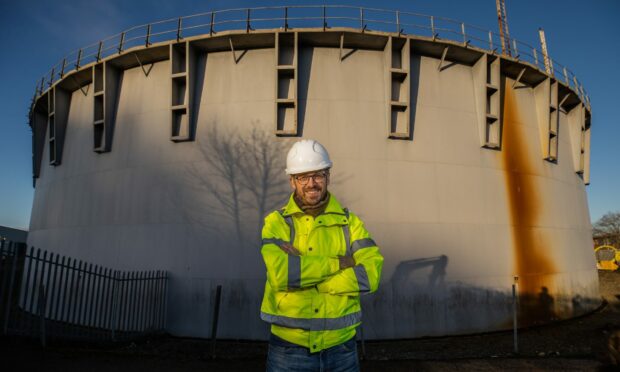Getech has completed the first phase of development at its Inverness green hydrogen hub, clearing the site ready for new infrastructure.
This first phase of work has seen Getech work with SGN Commercial Services to deconstruct the city’s former gas holder ready for development of the site.
The area on Harbour Road lies between Inverness’s rail depot and industrial area and will offer production, storage and distribution for green hydrogen, as well as supplying the commodity directly to large volume customers, including rail, bus, and heavy goods vehicles (HGVs).
A time-lapse video shows progress at the site.
The facility is expected to eventually produce eight tonnes of hydrogen and service up to 800 heavy goods vehicles per day.
Facility ‘ideally positioned’
Plans are being progressed by Edinburgh-based fuels developer H2 Green – a unit of Getech – alongside a similar a hub at Shoreham Port.
Owing to its location at Inverness’ rail head, the firm says the new facility will be “ideally positioned” to supply clean fuel for a future fleet of hydrogen trains and “kick start the decarbonisation of rail across the Scottish Highlands”.
The scheme will also form the core of Getech’s plans for a “multi-hub green hydrogen network” across the Highlands, with a regional plan to be produced as part of a study announced earlier this year and co-funded by Highland Council.
Meanwhile, Getech has signalled it will look to build further commercial agreements for green hydrogen offtake, linking transport schemes with consumption of by-products of hydrogen generation, including oxygen and zero-emission heat.
Getech chief executive Jonathan Copus said “The completion of demolition of the SGN gas holder site demonstrates tangible progress in our hydrogen operations in Inverness and forms part of a range of broader strategic initiatives being undertaken by Getech to achieve the production, storage and supply of green hydrogen – supporting our ambition to establish at least 500MW of new geoenergy and green hydrogen assets by 2030.
Scottish Hydrogen and Fuel Cell Association chief executive, Nigel Holmes, described the scheme “a pioneering example of the hydrogen economy’s potential”
He linked its development to other Scottish projects including the expanding hydrogen bus fleet in Aberdeen and the H100 Fife project in Levenmouth.
“With an abundance of renewable potential across the country, there is a fantastic opportunity to generate even more hydrogen and put Scotland on a clear path to reach net zero by 2045,” he added.
